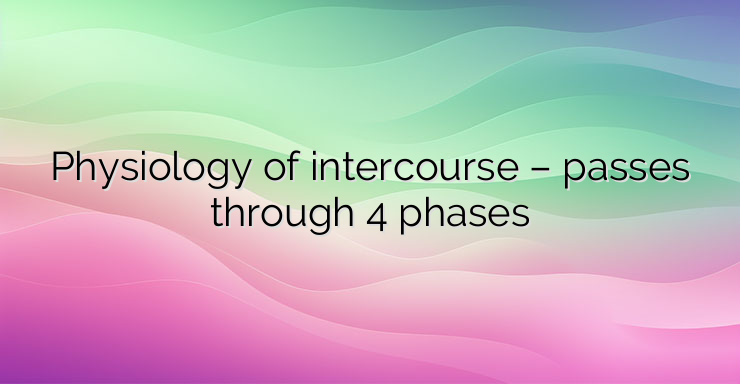In the course of sexual intercourse, four phases are distinguished: arousal, plateau, orgasm and relaxation. They are not always clearly distinguishable, they have individual duration and intensity. 1. Arousal phase This is the phase of exchanging love caresses during foreplay. Passionate desire in partners stimulates blood circulation – heart rate accelerates and blood pressure rises. A woman’s nipples, and sometimes a man’s, stand up and the dark circles around them – the areolas – shrink. This can also occur when stroking the breasts. A large amount of blood enters the female genital organs and their sensitivity increases. The clitoris swells. The labia majora part. A clear secretion is released from the wall of the vagina, which makes its entrance slippery. In men, the penis erects and grows, but the erection is still unstable. Its retention depends on sexual desire and bodily stimulation. 2. Plateau phase Arousal increases faster in men and more slowly in women. With its increase, the man has a desire to penetrate the female vagina, which is followed by several coitus movements – frictions. For some time, despite the frictions, the arousal remains at the same level or rises very slightly. This is the reason why this phase is called the plateau phase. Heart rate and blood pressure increase even more during this phase. The tone of the abdominal, chest and facial muscles increases. Breasts can increase their size up to a fifth of their original size. A reddening of the skin from the chest to the back of the head appears, which disappears in reverse order after orgasm. The labia majora become blood-filled and swollen, and the labia minora double in size and acquire a dark red color. Bartholin’s glands secrete a secretion that aids penetration of the penis. An orgasm cuff is formed in the outer third of the vagina, covering the penis tightly but elastically. At the same time, the vaginal floor inflates like a balloon – contact and irritation are significantly reduced there. In men, the penis enlarges even more and becomes red. The testicles are enlarged and raised. Drops of mucus discharge from the urethra. 3. Orgasm phase This phase is the climax of intercourse. In a few seconds, there is an explosive discharge of the tension built up in the previous phases. Muscle tension and contractions peak. The gluteal muscles and the muscles of the anus contract. Breathing quickens, blood pressure reaches maximum values. This is the reason why strong orgasms, despite their short duration, represent a significant load on the cardiovascular system. NEWS_MORE_BOX The sensation of pleasure is concentrated in the sexual area. In men, it peaks 2-4 seconds before the first ejaculatory impulse. This was followed by 2 to 10 ejaculatory waves of decreasing force and waning pleasure. The waves are due to expulsive contractions of the urethra. They occur involuntarily – once started they cannot be stopped.In a woman, the orgasm takes place in 5 to 12 waves, following one after the other. The orgasm cuff shrinks. Orgasmic contractions last from 10 to 60 seconds and decrease in strength. At the same time, the vagina of some women produces a copious amount of watery discharge. 4. Relaxation phase During this phase, the organs return to their initial state. Muscles relax. Breathing and heart activity normalize. Redness on the skin disappears. The clitoris and labia swell. The orgasm cuff disappears and the vagina relaxes. The fall of the member occurs in two stages. The first is immediately after ejaculation – his hardness decreases and his glans becomes particularly sensitive. In the second stage, its dimensions decrease below normal due to the complete emptying of the cavernous bodies. The testicles occupy their normal position.


Leave a Reply